- Privacy Policy

“That revolutionary feeling”: The Dubrovnik locals reclaiming their city from overtourism

Overtourism in Dubrovnik has long been a problem—but what about the locally-led counter-initiatives? Croatia-based writer Jonathan Bousfield talks to the local people who are going all-out to preserve the city’s identity and community spirit.
“It’s the first time I’ve had that revolutionary feeling that we’re doing things together,” says Dubrovnik musician Ivan Jakić, as he and colleagues Ivica Glunčić and Nino Glavinić show me round the TUP complex, a community cultural hub housed in a former graphite factory in Dubrovnik’s portside suburb of Gruž.
Jakić and fellow activists are particularly proud of the recording studio that fills a former storeroom. “It’s actually the only space in the city where you could record a big band,” Jakić tells me. “Most of the other studios in town are in converted garages.”
Situated four kilometers west of Dubrovnik’s famously photogenic Old Town, Gruž has become something of a buzzword over the last few years. It’s the last bastion of an ‘authentic’ urban Dubrovnik increasingly squeezed into the background by the homogenizing forces of mass tourism.
Indeed, the Dubrovnik Tourist Board, aware that cramming the Old Town full of visitors is not a sustainable strategy either for Dubrovnik as a town or for tourism as an industry, has taken Gruž under its wing. This summer sees the second edition of Summer in Gruž (Ljeto u Gružu), a season-long festival that brings music and entertainment to the suburb’s open spaces, and is intended as much for a local audience as it is for foreign visitors (a novel idea for a tourism board).
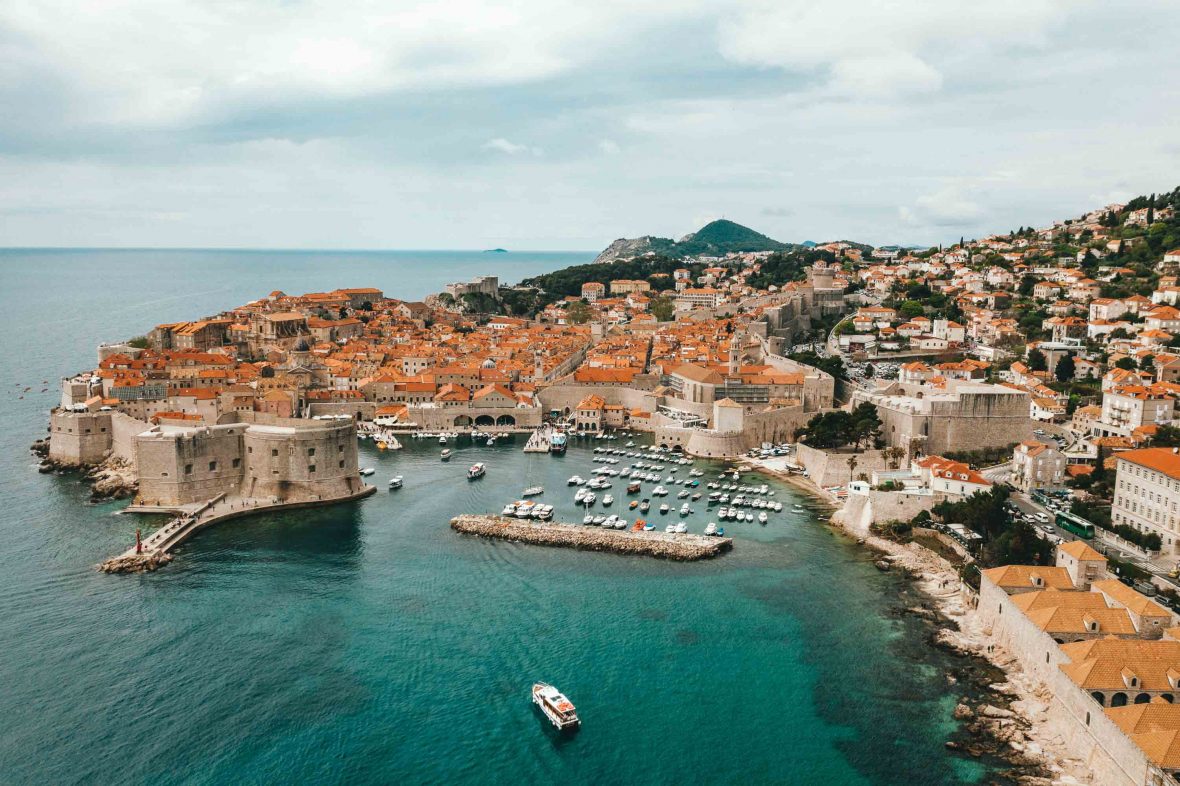
It’s a festival in which the TUP factory is a key partner. As well as offering recording facilities to local bands, the hub also has a museum, nightclub, ceramics workshop, print shop and a yoga and fitness studio—as well as providing a home to various community initiatives. The complex was purchased by Dubrovnik City Council in March 2022, increasing hopes that the TUP project becomes a long-term fixture.
It was announced in mid-July that a council-sponsored project for the revitalization of the TUP factory has been selected as one of the 20 best applications in the EU’s ‘New European Bauhaus initiative’ (a project specifically designed to promote sustainable cultures and communities). This cements its place as a prime candidate for future EU funding.
No less serious, however, is the dramatic effect tourism can have on a city’s cultural ecology, gradually eroding the foundations on which a local arts scene is based. The venues, the social hangouts, the galleries… they all disappear to be replaced by tourist business that can pay higher rents.
The TUP story is far from being just another post-industrial tale of brownfield sites adapted for cultural use. It’s also a running commentary on Dubrovnik’s attempts to win back a sense of civic identity.
A relatively small city with a population of just under 42,000, Dubrovnik received 1.44 million visitors in 2019, the last pre-pandemic year—that figure represented a 100 percent increase over the preceding decade.
And this number didn’t even include the 730,000 cruise ship passengers who visited that same year, most of whom walked around Dubrovnik’s Old Town before returning to their ships and sailing off to their next port of call.
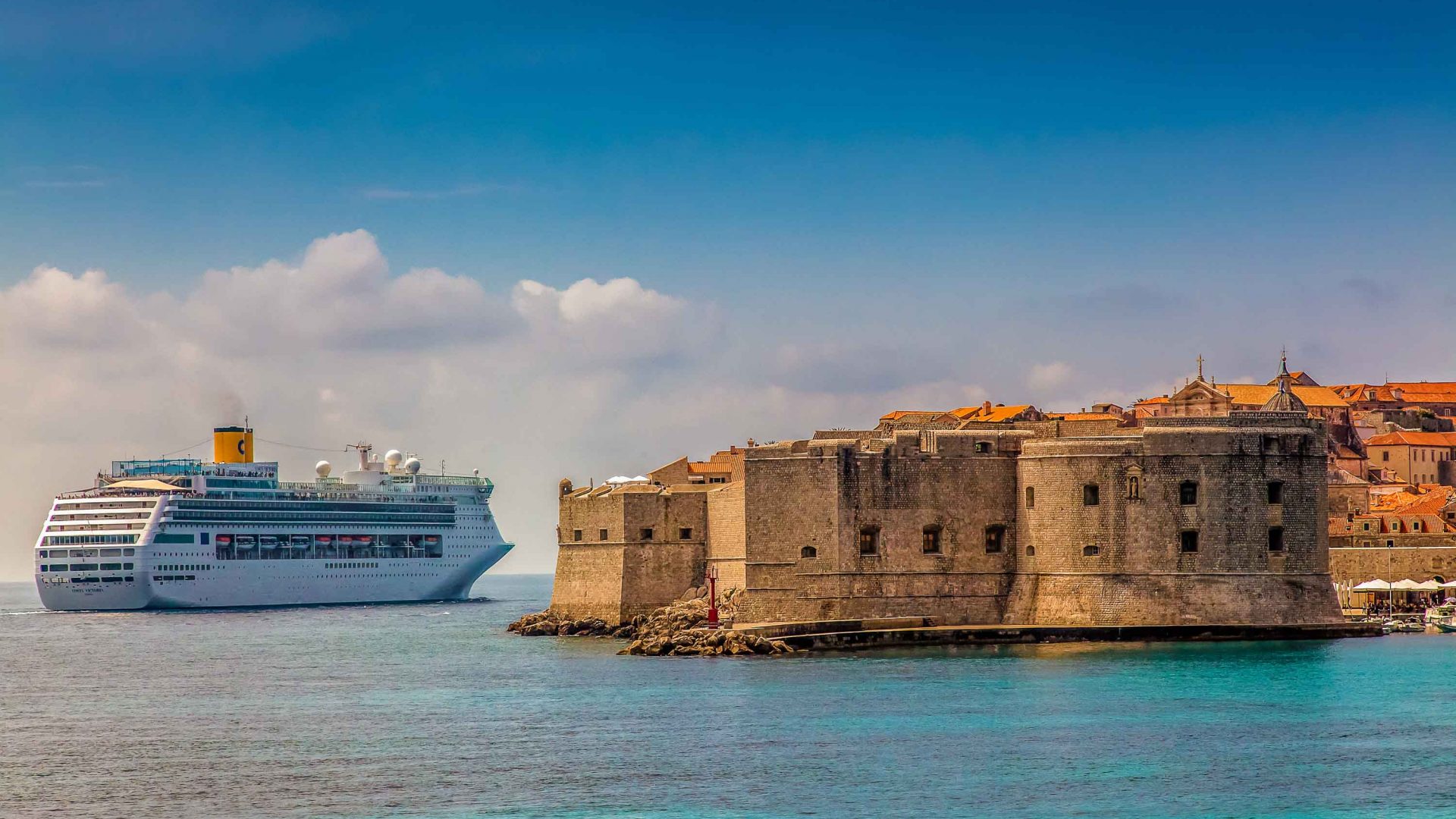
We already know that high levels of tourism can lead to serious environmental and structural problems—bringing pollution and overcrowding, and forcing locals out of old-town centers as more and more flats are turned into tourist apartments.
No less serious, however, is the dramatic effect tourism can have on a city’s cultural ecology , gradually eroding the foundations on which a local arts scene is based. The venues, the social hangouts, the galleries… they all disappear to be replaced by tourist businesses that can pay higher rents. This, in turn, can influence the behavior of tourists themselves, who may begin to think that local culture has always been about cocktail bars and imported western DJs.
It’s a dilemma to which TUP represents one possible answer: A grassroots project that exists outside the tourist economy, providing a focus for community life that tourists will actually get something out of as well.

One of TUP’s first post-industrial tenants was the Red History Museum , a private venture set up on a budget. It aims to tell the story of Croatia under communism through a display of pop-cultural artifacts donated by local people.
Croatian museums have consistently failed to deal adequately with the history of the country during the Yugoslav epoch, and it was left to the independent Red History team to treat the subject with the right balance of calm analysis and historical color. The museum was an important addition to Dubrovnik’s attractions, demonstrating that there was more than one way of telling the city’s story.
“TUP is the only space left in Dubrovnik that could be earmarked for cultural use and for local life, and which can function as a hub rather than leaving the community to rely on a load of displaced activities.” - Nino Glavinić—Red History Museum
Next came Klub Dubina , an underground club dedicated to live music, DJ sets and contemporary art happenings. They were planning to open in spring 2020, but were delayed until this year due to the pandemic.
Perhaps naturally for a pair of rock musicians, Jakić and Glunčić (guitarist and drummer, respectively, in the local band Ape Revolution Bell) see the strength of the local music scene as a litmus test of the city’s cultural vitality. “Tourism has a tendency to take the individuality out of the scene because bands go straight to the hotel terrace,” says Jakić, alluding to the money that can be made playing cover songs to tourists in the summer. “But you can’t have a scene without an all-year live venue, and we’re hoping that Dubina will play that role.”

For some, TUP is something of a lifesaver. “TUP is the only space left in Dubrovnik that could be earmarked for cultural use and for local life,” says Nino Glavinić of the Red History Museum, “and which can function as a hub rather than leaving the community to rely on a load of displaced activities.”
But the project had to sell itself as something rather more serious than just a handful of ‘alternative types taking over a factory.’ “We had to have a convincing sales pitch; a program of activities that made it clear this was a community affair,” adds Jakić.
A cultural association called KC Jadran (Adriatic Cultural Center) was formed to act as an umbrella organization. “It was important to gain the trust of local people and the media. This is what the mayor would listen to; not just the stance of a few activists.”
KC Jadran held a spring fair in 2021 to show the local community what they were doing. “It was a kind of release from Covid as well as a launch project,” says Glavinić. “Local media were very positive—and we discovered that there’s actually a huge need for kids’ workshops in Dubrovnik, a need that TUP can do an awful lot to fulfil.”
With COVID-19 restrictions gradually easing, the TUP team went on to organize film shows, concerts, and stand-up comedy evenings, becoming a fixture on the city’s social calendar.
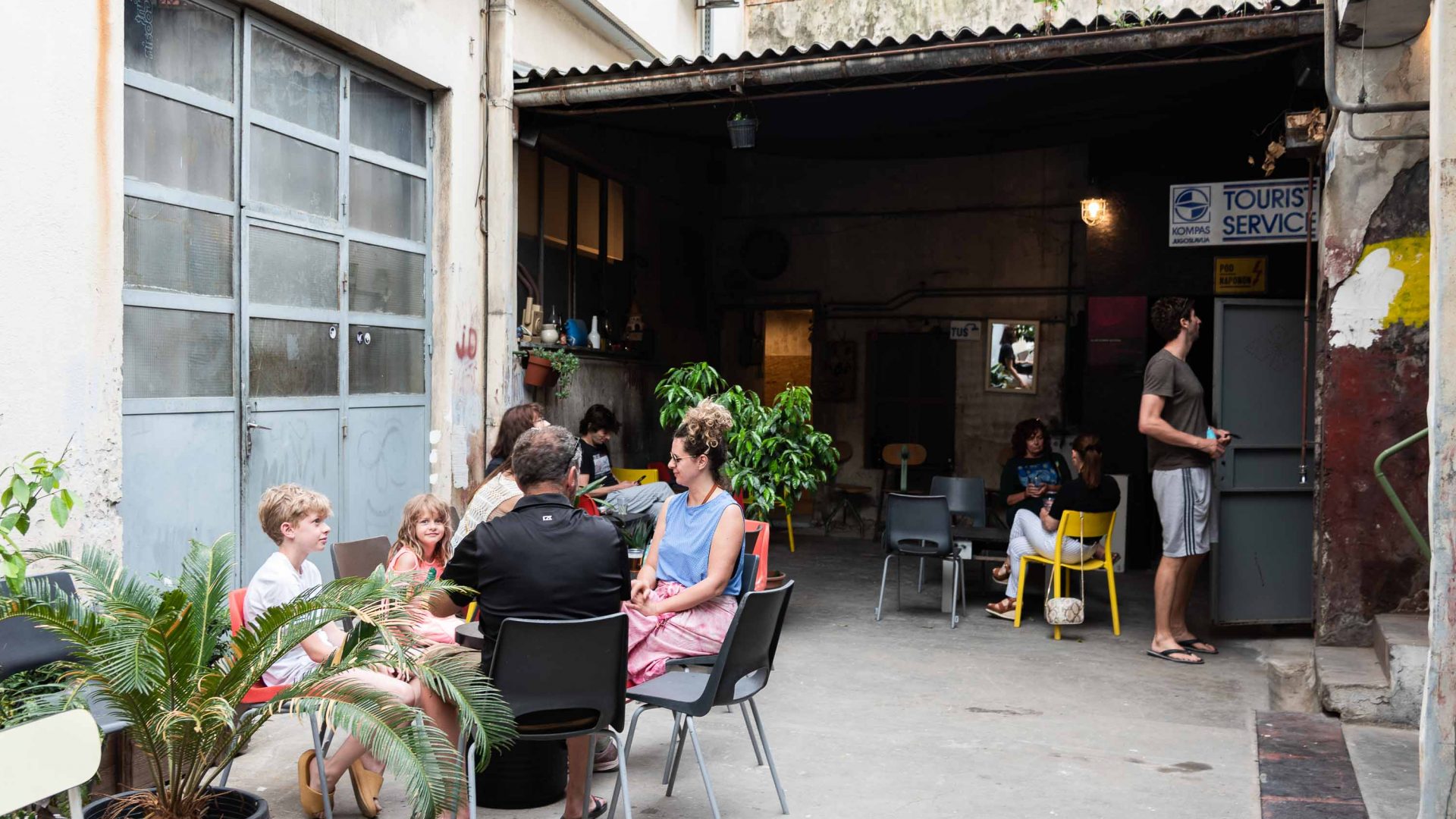
While Dubrovnik’s Old Town has ceased to function as a local space for much of the year, harborside Gruž is still the kind of place where locals come to do their daily business and natter over coffee. It is the site of the city’s main market, and also home to several boutique businesses that have congregated here because rents in the Old Town are prohibitively high. It’s in Gruž, for example, that you’ll find the outstanding creations of the Mala Truba cake shop or the deli delights of the Gligora cheese store .
Also in Gruž are the Dubrovnik Beer Company’s tap room , and the delightfully mellow terrace of the Love Bar —both increasingly important social hubs that suck in locals year-round precisely because they are not in the Old Town and represent a welcome respite from the tourist invasion.
Both the Summer in Gruž festival and the TUP project represent a yearning for a vibrant, urban Dubrovnik that existed long before mass tourism.
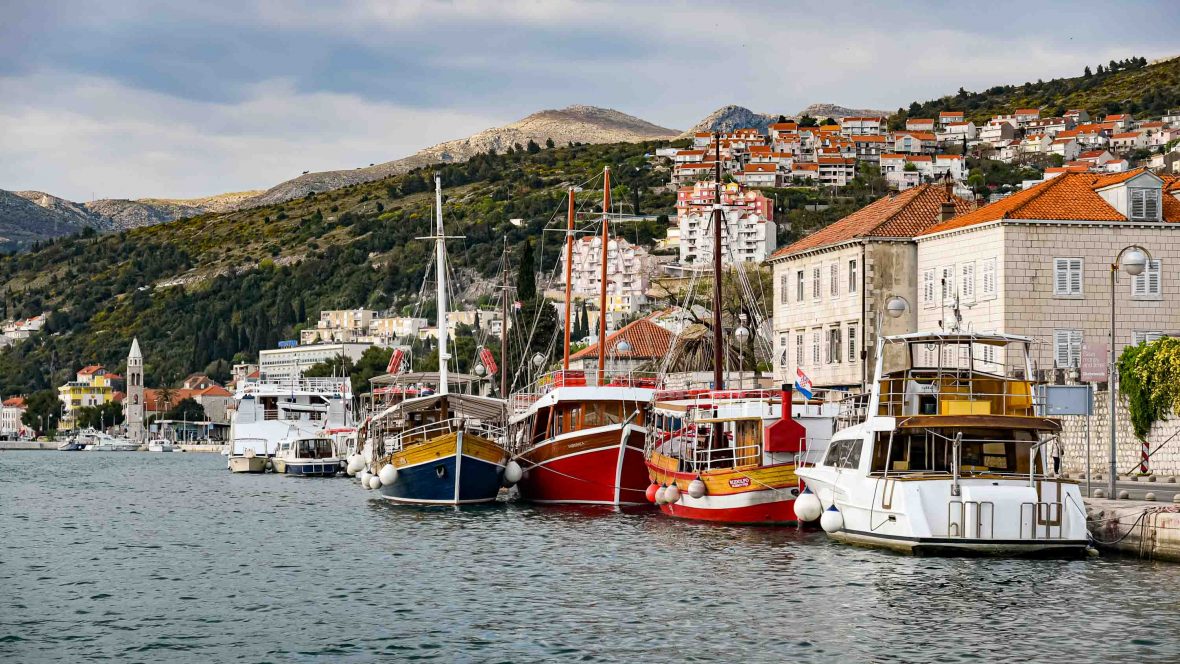
“Sustainable urban culture is one of the components of Dubrovnik as a liveable community,” says Miroslav Drašković, the director of the Dubrovnik Tourist Board. “And providing an event which would be interesting for both locals and tourists and which will make them interact and create a mingling experience is the ultimate goal of all the event planners and for the tourist board, too.”
According to city council spokesman Petar Ipšić, the long-term aim is to use the TUP site to create “a parallel city center” that will function as “a common space for both the local community and visitors.” The site “will provide premises for young entrepreneurs, creatives, and artisans, who are often unable to adequately promote their work due to the city’s high rents.” The resulting “socio-cultural incubator” will help to improve “the cultural and tourist offering of Dubrovnik, currently heavily related to the Old Town and city walls.”
Of course, the paradox of projects like TUP is that an attempt to make Dubrovnik’s cultural economy less dependent on tourism becomes a tourist attraction in itself. But it does also ask questions about what we want to see when we visit an urban destination: Is it a lavish historical backdrop to our own leisure habits, or a living city from which we can learn? If you want to appreciate Dubrovnik as a community rather than as a museum, then sooner or later you’ll have to head for Gruž.
Share this article
- Urban exploring
- Urban regeneration
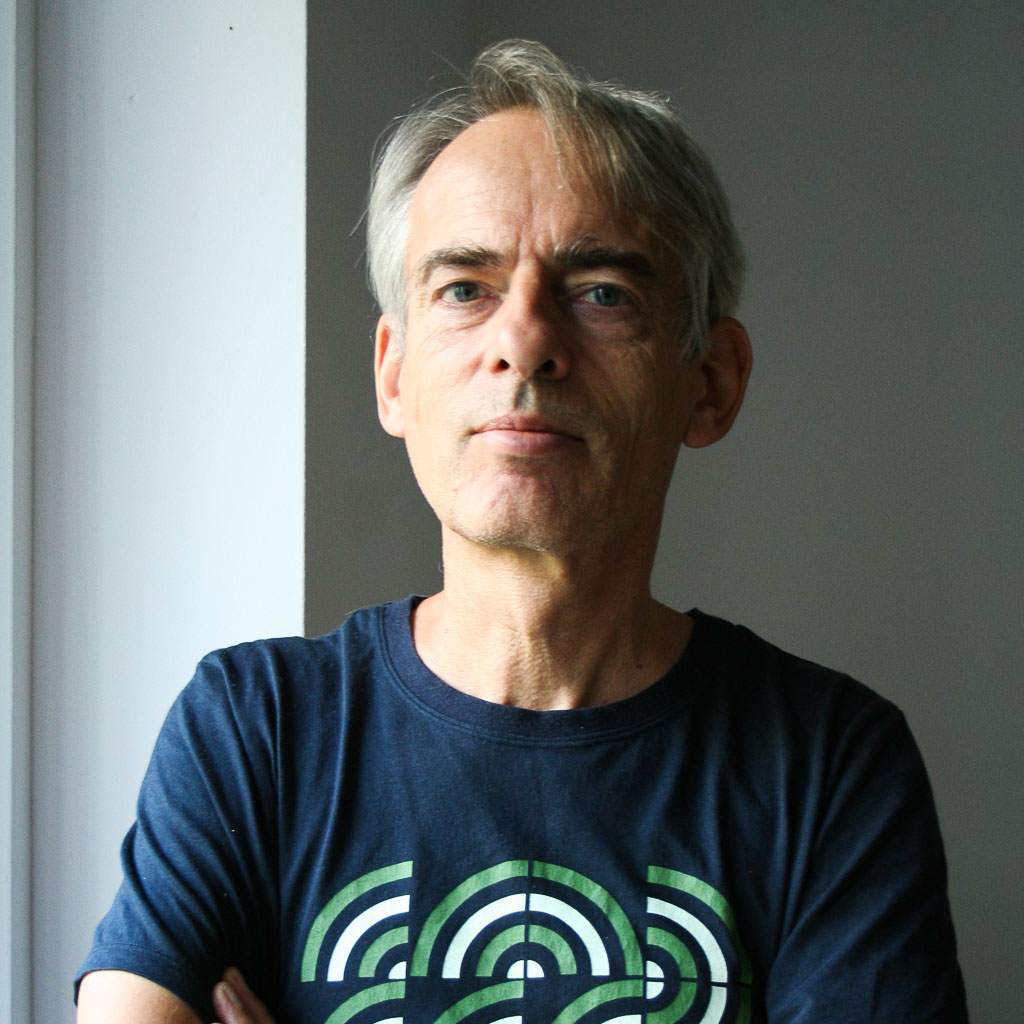
Jonathan Bousfield is a Zagreb-based author and travel writer who’s written about travel, culture and history in Croatia, Central and Eastern Europe for Rough Guides, DK Eyewitness, Time Out Croatia, The Calvert Journal, Jutarnji List, The Guardian, The Independent and Lonely Planet. His history of Adriatic tourism, 'Adria Blue', will be published in 2023.
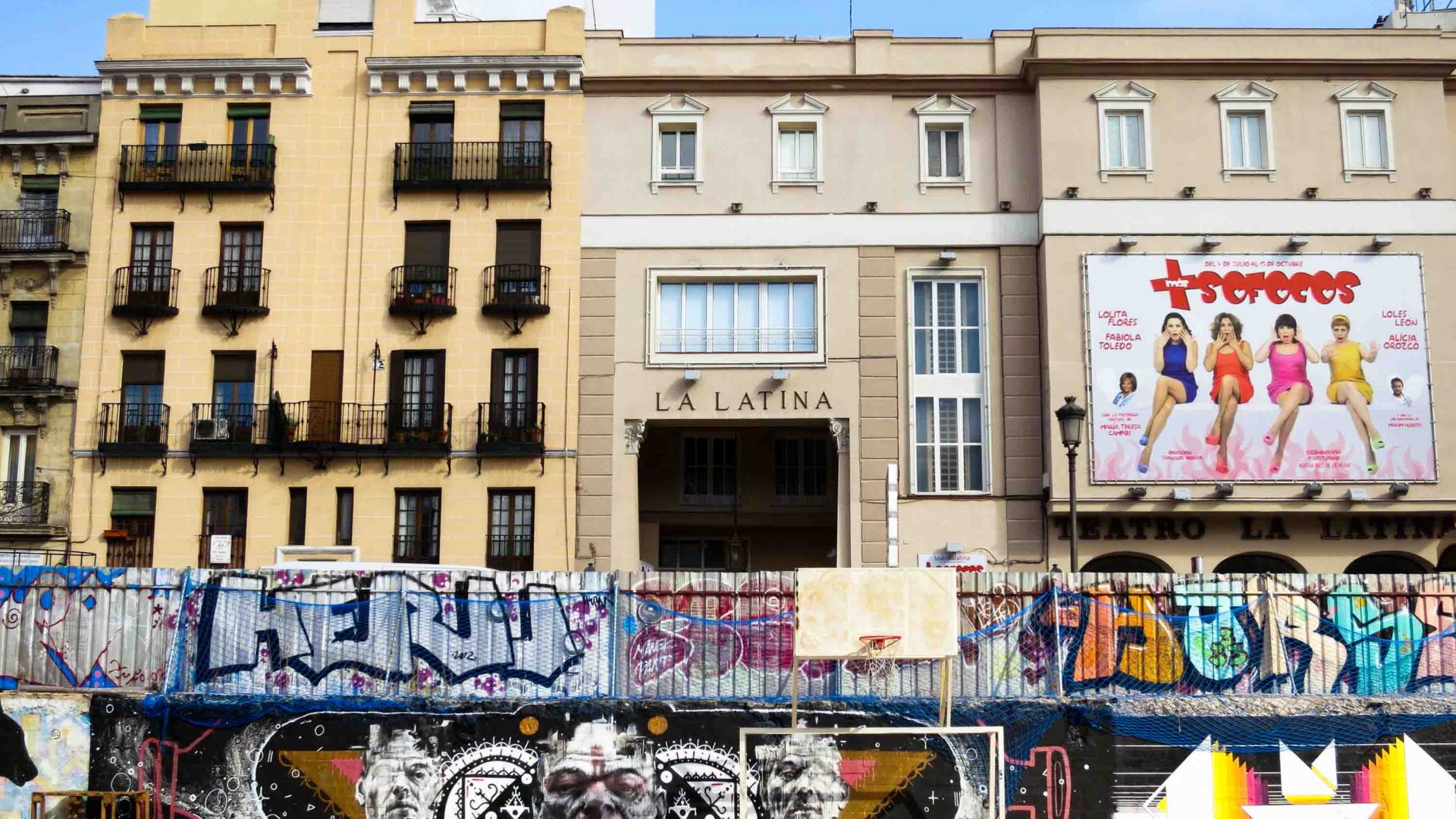
24 hours of love and loss in Madrid’s La Latina

‘Forgotten histories’: The Indigenous entrepreneurs telling their story in this Brazilian city
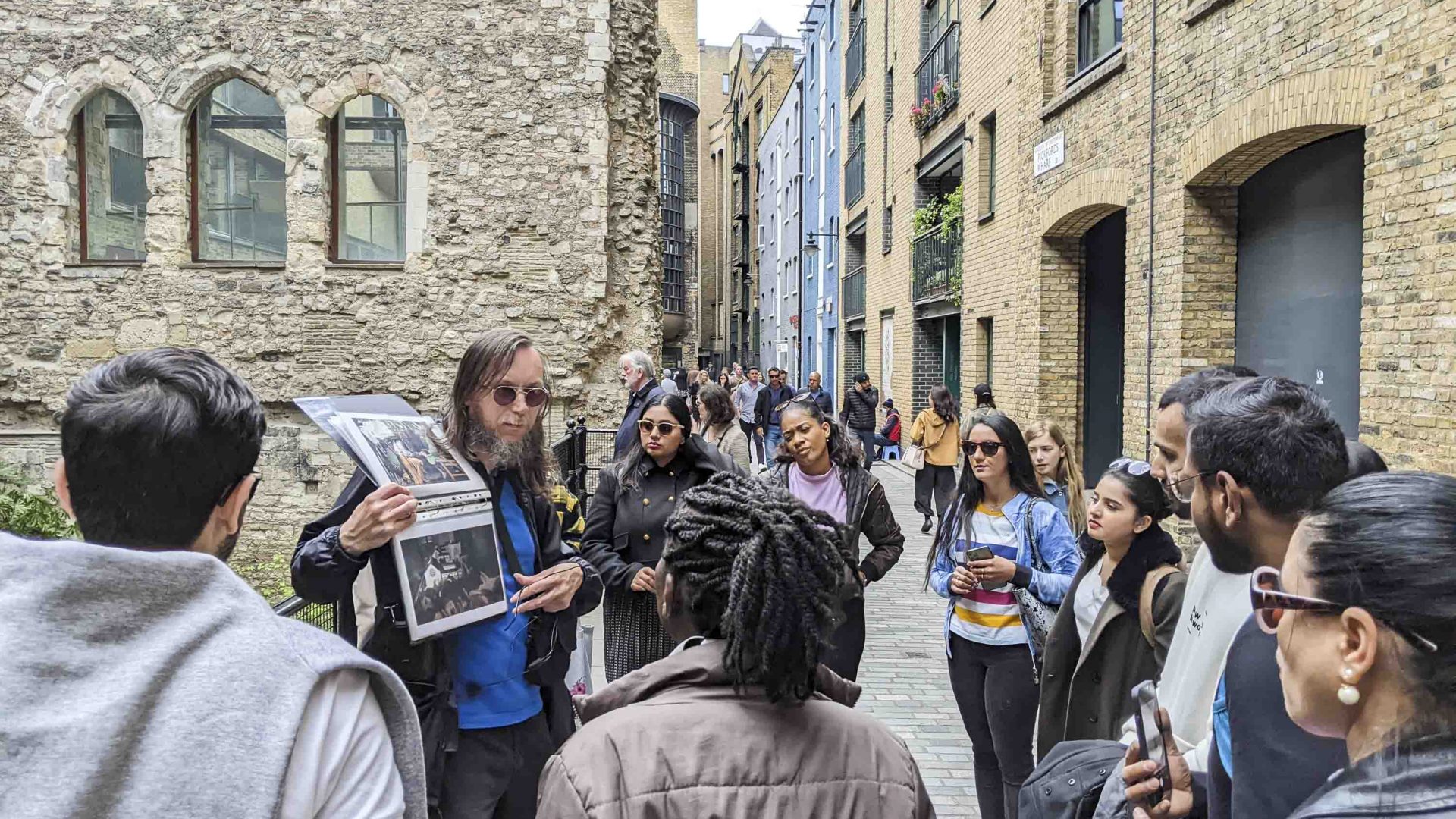
“This is where I used to sleep”: Meet the tour guides offering a new perspective of London

Can Japan’s ‘tiny homes’ help revive its rural towns?
Can't find what you're looking for? Try using these tags:
- Responsible travel
- Food & drink
- Travel trends
- Slow travel
Destination Stewardship Center
Extending the work of the national geographic center for sustainable destinations..

Once Overrun, Dubrovnik Plans for Sustainability
Dubrovnik, Croatia, a UNESCO World Heritage city, is known as the ‘Pearl of the Adriatic Sea’, its historic city center surrounded by original medieval stone walls – and until recently, thronged with cruise ship passengers. In 2017, that began to change. The following before-and-after story has been provided by the Mayor’s Office, City of Dubrovnik (with a closing note on the Covid hiatus).

View over the medieval historic core of Dubrovnik, ‘Pearl of the Adriatic’.
[All photos courtesy of the City of Dubrovnik]
‘Respect the City’ Program Includes Limits on Cruise-ship Crowds
Dubrovnik, a champion of Croatian tourism, is a city that is both a museum and a performance stage, a unique combination of history and modernity – a city with a capital C. Its rich cultural heritage, different architectural styles, various cultural events, film tourism (think Game of Thrones ), Mediterranean flavors, and superior accommodations draw millions of tourists each year. The old city center, surrounded by original medieval walls, has been under UNESCO World Heritage inscription since 1979.
The coastal city is a popular stop-off for cruises. In 2013, for instance, there were more than one million cruise passengers in Dubrovnik, occasionally resulting in more than 10 thousand visitors in the historic core at one time.

Cruise ships pack the main Dubrovnik port in times before “Respect the City”.
By 2017 the city was facing negative publicity in global media due to overtourism and uncontrolled tourism development. The city was falling victim to its own success, and its citizens were becoming more openly critical. Amidst such chaos, many visitors could not fully experience the city’s history and culture. Eventually, UNESCO warned that the overwhelming number of tourists could result in its World Heritage listing being revoked and advised that no more than 8,000 tourists be in the historic core at any one time.
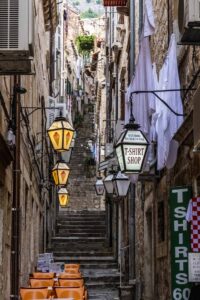
Signs of 21st-century mass tourism hang on a medieval street.
Shortly after being elected in June 2017, mayor Mato Franković introduced the multidisciplinary project “Respect the City” (RTC), aiming for more sustainable development of Dubrovnik. He began tackling the difficult challenge to reduce overcrowding through different measures for relieving traffic congestion and implementing smart city solutions. In particular, he reduced the number of souvenir stands by 80 percent and cut the number of restaurant tables and chairs by 30 percent. As a result, the City has lost some revenue, at least 5 million kuna a year (around €660,000 or US$786,000 ). To illustrate, the highest rent for a small stand at that time was more than 400,000 kunas annually, achieved at public tender.
‘Some of the measures we implemented are unpopular, but such moves are necessary if we want to reach the sustainable tourism we seek’, said Mayor Franković about financial losses. ‘Our task is to put the needs of citizens first. Everything we have done and will do in the future will greatly contribute to creating a unique destination experience and increase the quality of the overall service for all visitors’.
Various strategies have been implemented in cruise tourism. The City approached the Cruise Lines International Association (CLIA) and, in partnership with them, reorganized cruise schedules to stagger departure and arrival times. It is essential to emphasize that the cruise industry is an important segment of the economy in Dubrovnik. The city policy was that the number of people was never a problem; it was the flow. Better flow was achieved by organizing the ship-arrivals timetable more carefully, both daily and throughout the year. The maximum number of ships was set to two ships at once and the limit of visitors in the walled city coming from cruise ships at 4,000 – half the number suggested by UNESCO. Harmonization of arrival times has relieved pressure on the historic core in the summer seasons of 2018 and 2019 (pre-COVID years), compared to 2017 and earlier.

The 16th-century Pile Gate, main entrance to the old town, blocked by crowds in 2017 . . .

. . . and flowing freely in summer 2019.
CLIA´s repeated willingness to cooperate in order to resolve the existing problems in the spirit of partnership is precious to the City of Dubrovnik. As a part of that partnership and the “Respect the City” project, Dubrovnik in 2019 became one of the 30 world destinations for which the Global Sustainable Tourism Council (GSTC) has done a Destination Assessment and Action Plan. Development of the Plan represents the City’s firm commitment and unshakeable determination in moving tourism towards a sustainable future.
The City achieved 70% of excellence in the GSTC report, attesting to its focus on a sustainable future for tourism and the city. GSTC recognized numerous examples of good practices in the process, mainly regarding public safety, urban cleanliness, and a high degree of heritage conservation. These included the reconstructed Lazareti site , special measures for heritage protection, local festivals, products, and entrepreneurs, as well as protection of biodiversity, and monitoring the Respect the City project itself.
Sustainable Tourism for a Sustainable Future ‘This report represents a new beginning of the story of a sustainable Dubrovnik and a sustainable way of managing tourism as our main industry,’ said Mayor Franković. ‘Working on assessment in 2019, GSTC consulted with 70 stakeholders from national and local government, the private sector, NGOs and universities, and residents. All stakeholder inputs are very valuable to us, because we want our city to be a great place for anyone – residents and guests alike’, he concluded.
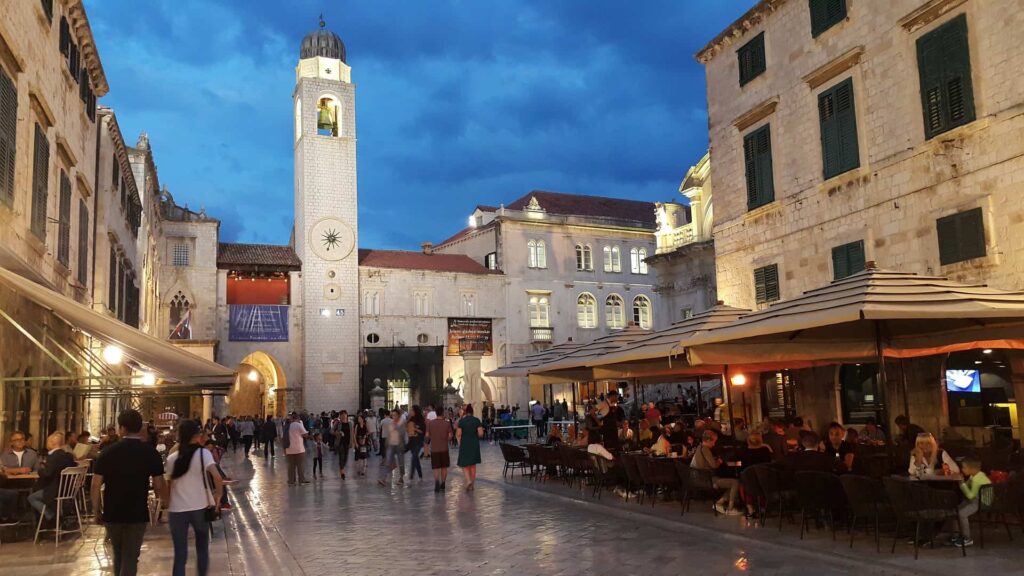
Evening in Dubrovnik, after many cruise passengers have left.
The conservation of cultural heritage, the quality of citizens’ daily lives, and the provision of the best possible experience of Dubrovnik as a destination – all those are motives for this shift in destination management. Respect the City attracted the attention of international media and the global tourism sector. Dubrovnik is increasingly becoming perceived as a city that has started managing its tourism in a sustainable way. As key factors in years to come, the City of Dubrovnik is planning to take over cruise ship shuttle services and gradually eliminate traffic around the gateway area.
In COVID-19 times Croatia was recognized as a safe destination due to its good epidemiological situation in 2020, and safety continues to be the focus in 2021.

About DSR Contributors
Volunteer contributors are welcome to the Destination Stewardship Report. Contact us with your proposals and ideas.
Leave a Reply Cancel reply
Your email address will not be published. Required fields are marked *
Please enter an answer in digits: fifteen − two =
- Election 2024
- Entertainment
- Newsletters
- Photography
- Personal Finance
- AP Investigations
- AP Buyline Personal Finance
- Press Releases
- Israel-Hamas War
- Russia-Ukraine War
- Global elections
- Asia Pacific
- Latin America
- Middle East
- Election Results
- Delegate Tracker
- AP & Elections
- March Madness
- AP Top 25 Poll
- Movie reviews
- Book reviews
- Personal finance
- Financial Markets
- Business Highlights
- Financial wellness
- Artificial Intelligence
- Social Media
Mass tourism threatens Croatia’s ‘Game of Thrones’ town
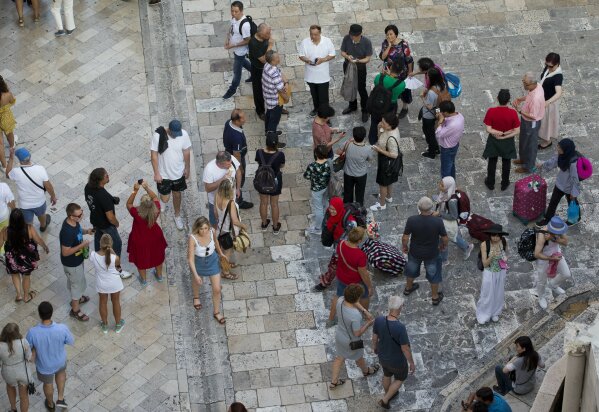
In this Sept. 7, 2018 photo, tourists walk through Dubrovnik old town. Crowds of tourist are clogging the entrances into the ancient walled city, a UNESCO World Heritage Site, as huge cruise ships unload thousands more daily. (AP Photo/Darko Bandic)
This Sept. 4, 2018 photo shows the harbor in the old town of Dubrovnik from a hill above the city. Crowds of tourist are clogging the entrances into the ancient walled city, a UNESCO World Heritage Site, as huge cruise ships unload thousands more daily. (AP Photo/Darko Bandic)
This Sept. 4, 2018 photo shows the old town of Dubrovnik from a hill above the city. Crowds of tourist are clogging the entrances into the ancient walled city, a UNESCO World Heritage Site, as huge cruise ships unload thousands more daily. (AP Photo/Darko Bandic)
In this Sept. 7, 2018 photo, a cruise ship sails off as another one is moored in Dubrovnik. Crowds of tourist are clogging the entrances into the ancient walled city, a UNESCO World Heritage Site, as huge cruise ships unload thousands more daily. (AP Photo/Darko Bandic)
- Copy Link copied
DUBROVNIK, Croatia (AP) — Marc van Bloemen has lived in the old town of Dubrovnik, a Croatian citadel widely praised as the jewel of the Adriatic, for decades, since he was a child. He says it used to be a privilege. Now it’s a nightmare.
Crowds of tourists clog the entrances to the ancient walled city, a UNESCO World Heritage Site, as huge cruise ships unload thousands more daily. People bump into each other on the famous limestone-paved Stradun, the pedestrian street lined with medieval churches and palaces, as fans of the popular TV series “Game of Thrones” search for the locations where it was filmed.
Dubrovnik is a prime example of the effects of mass tourism, a global phenomenon in which the increase in people travelling means standout sites — particularly small ones — get overwhelmed by crowds. As the numbers of visitors keeps rising, local authorities are looking for ways to keep the throngs from killing off the town’s charm.
“It’s beyond belief, it’s like living in the middle of Disneyland,” says van Bloemen from his house overlooking the bustling Old Harbor in the shadows of the stone city walls.
On a typical day there are about eight cruise ships visiting this town of 2,500 people, each dumping some 2,000 tourists into the streets. He recalls one day when 13 ships anchored here.
“We feel sorry for ourselves, but also for them (the tourists) because they can’t feel the town anymore because they are knocking into other tourists,” he said. “It’s chaos, the whole thing is chaos.”
The problem is hurting Dubrovnik’s reputation. UNESCO warned last year that the city’s world heritage title was at risk because of the surge in tourist numbers.
The popular Discoverer travel blog recently wrote that a visit to the historic town “is a highlight of any Croatian vacation, but the crowds that pack its narrow streets and passageways don’t make for a quality visitor experience.”
It said that the extra attention the city gets from being a filming location for “Game of Thrones” combines with the cruise ship arrivals to create “a problem of epic proportions.”
It advises travelers to visit other quaint old towns nearby: “Instead of trying to be one of the lucky ones who gets a ticket to Dubrovnik’s sites, try the delightful town of Ohrid in nearby Macedonia.”
In 2017, local authorities announced a “Respect the City” plan that limits the number of tourists from cruise ships to a maximum of 4,000 at any one time during the day. The plan still has to be implemented, however.
“We are aware of the crowds,” said Romana Vlasic, the head of the town’s tourist board.
But while on the one hand she pledged to curb the number of visitors, Vlasic noted with some satisfaction that this season in Dubrovnik “is really good with a slight increase in numbers.” The success of the Croatian national soccer team at this summer’s World Cup, where it reached the final, helped bring new tourists new tourists.
Vlasic said that over 800,000 tourists visited Dubrovnik since the start of the year, a 6 percent increase from the same period last year. Overnight stays were up 4 percent to 3 million.
The cruise ships pay the city harbor docking fees, but the local businesses get very little money from the visitors, who have all-inclusive packages on board the ship and spend very little on local restaurants or shops.
Krunoslav Djuricic, who plays his electric guitar at Pile, one of the two main entrances of Dubrovnik’s walled city, sees the crowds pass by him all day and believes that “mass tourism might not be what we really need.”
The tourists disembarking from the cruise ships have only a few hours to visit the city, meaning they often rush around to see the sites and take selfies to post to social media.
“We have crowds of people who are simply running,” Djuricic says. “Where are these people running to?”
Darko Bandic contributed to this report.

Why Dubrovnik Has Gone Quiet about Overtourism
Locals above 40 years in Dubrovnik still bear fresh memories of the 1991 siege and the following years when the town struggled to recover. Dubrovnik was only eager to welcome tourists, and there was no plan to control the numbers. Nobody thought it would ever become a problem.
Fast forward to the 2010s, and the headlines were filled with news of Dubrovnik suffocating under overtourism . In the meantime, UNESCO warned about the impending loss of World Heritage status. Yet, just a few years later, overtourism seems to have faded in our minds. Is everything okay now?
King's Landing or Dubrovnik? How it Begun
Dubrovnik has always been a filming hotspot. Talk about Emerald City, Robin Hood, James Bond, and Star Wars: The Last Jedi. However, none induced growth in tourism like Game of Thrones, the 9.2/10 rated TV show that started filming in 2011 and lasted eight seasons, all the while using Dubrovnik as the shooting location for the fictional city King's Landing.
Many famous scenes of the show, including Cersei's walk of shame, Daenerys' visit to Qarth, and Joffrey's tournament, were filmed in Dubrovnik . The town's remarkable medieval architecture can be seen on HBO’s TV show, almost exactly as it is in real life. Consequently, hundreds of thousands of fans flock to King's Landing every year, eager to take pictures of their favorite locations, such as the notoriously overcrowded Pile Gate.
In 2005, mayor Franković confirmed to Bloomberg that the show was responsible for half of Dubrovnik's 10% annual tourism growth. Moreover, speaking to The Telegraph some years back, tour guide Ivan Vukovic pointed out that Game of Thrones was responsible for 8 of the 18 tours his company organized daily in Dubrovnik.

Game of Thrones in Dubrovnik - Photo HBO
These numbers are understandable, considering we are talking about the most popular TV show of the last decade. According to Statista, GOT regularly attracted over 10 million viewers on HBO, not counting millions of others that illegally watched the episodes online. Moreover, the show was nominated for 32 Primetime Emmy Awards in 2019 alone .
Add the power of social media to the blend, and it becomes very difficult for any GOT fan to pass up a chance to stop by King's Landing during their adventures. Then there are cruise ships, only eager to please their thousands of guests by including the best, most popular stops in their itineraries.
By the mid-2010s, Dubrovnik was no longer sure it could handle all the love. Locals were migrating to get out of the way of tourists and rising property prices. In the meantime, those who remained behind were taking to the streets to demonstrate against the beehive of activities straining the town's infrastructure to its limits.
Also, UNESCO had taken notice of the situation and warned Dubrovnik of the possibility of losing world heritage status. If the city was to keep its doors open sustainably, something had to be done.
Tourism in the Pandemic: Way Less than Bargained for
The pandemic hit hard just as locals and the concerned half of the world were begging tourists to stop choking their towns during the peak summer season. Visitor numbers plummeted from almost 1.5 million in 2019 to just above 220,000 in 2020 . Dubrovnik did not want thousands of tourists clogging up its streets, but it didn't ask for none either.
This spelled doom for a town that has relied heavily on tourism to keep the economy steady for decades. Hotels were left empty, and the streets of Dubrovnik were bare as governments banned flights and cruise ships got stuck at sea. The locals preferred to stay indoors, too.

Dubrovnik in the pandemic - Photo DB
Consequently, the web flourished as remote working and sources of entertainment such as game consoles and online casino games became more popular, while land-based establishments closed their doors reluctantly. The town gradually started missing the days when summers would attract cruise ships and buses, each bringing a significant percentage of guests eager to spend money.
Now that the pandemic is over, one may be forgiven for thinking it sealed the people's mouths concerning the overtourism issue. Sure, many had wished for tourism to bounce back in the region, but Dubrovnik would not make the same mistake of opening its doors without a plan. Plans were underway before COVID-19's unexpected interruption.
Controlling Visitor Numbers Sustainably
Thanks to Mayor Franković's administration and its "Respect the City" project, Dubrovnik was already on top of the case before the pandemic. The mayor coordinated many stakeholders to enable a better flow of visitors in the town. For example, cruise ships and buses had to book their stops in advance. Levies were also introduced for buses that dropped by unannounced.
Additionally, no more than two cruise ships would be allowed to dock simultaneously. They would not be allowed to bring in more than 4,000 guests at the same time either, which is half of the number recommended by UNESCO. Moreover, the town now uses cameras to monitor and control this traffic.
Something also had to be done about the locals moving out of the city. The administration's solution, in this case, was to try and make life more comfortable. A water purifier plant, the first new retirement home, and the first school in over 30 years were the beginning.
Since limiting cruise ship numbers had the potential to tank tourist numbers, ships were encouraged to stay longer by paying less the longer they stayed in the city. Another great solution was to try boosting activity during the off-season by encouraging digital nomadism. The first DN-I-R program took off in 2021, though we are still waiting to see the trend catch on in Dubrovnik.
It gets better: Dubrovnik also introduced a system that tells visitors how many cruise ships and tourists will be expected on specific days throughout the year. Tourists can also easily find information on the best time to visit.
So, did the pandemic hush Dubrovnik's cry for reasonable tourism? No, it did not. The city is doing better, thanks to lessons learned from past mistakes and its relentless quest to survive – as it has for hundreds of years.
The Voice of Dubrovnik

Find us on Facebook
Development

Vienna has its first green hydrogen plant
The facility will be able to power 60 buses daily
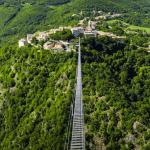
This Italian region now has Europe’s highest Tibetan bridge
It’s not for the faint-hearted
Economy and Finance
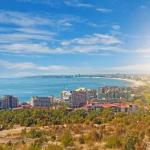
These are Europe’s 3 most affordable holiday destinations in 2024
Overall, the continent is getting more expensive for tourism
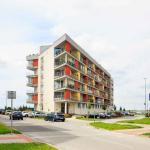
Housing in Prague is the least affordable in Europe
What are the reasons for that and are there any possible solutions for that problem?
Politics and Reforms

Chatbot helps Flemish voters make a decision for the upcoming elections
The aim of the smart device is to present information without political colouring
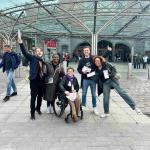
Belgian railways ask Flemish party to stop handing “fake ticket” flyers
The leaflets were part of an election campaign, but it looks like the promise printed on them was too realistic
Innovation and Research
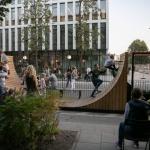
Vilnius’ mobile courtyards revive a community and then move on
Easy, simple and cheap solution to create a focal attraction in any neighbourhood

German town tests the traffic light of the future
It looks like a regular traffic signal, but it has more features and responds intelligently to the situation on the road below
Digital transformation
Energy efficiency.
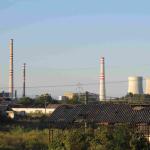
Slovakia shuts down its last coal plant today
Electricity production in that Eastern European country will not release direct CO2 emissions anymore
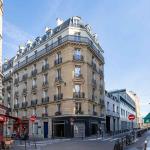
Paris reports positive impact from energy renovation on social housing
A recent study showed how these energy efficiency projects make the living habitat more…livable
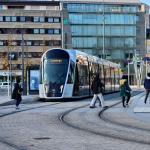
Luxembourg’s free public transport will finally also have free wifi
The Grand Duchy was the first country in the world to provide free public transit on its entire territory
Public Spaces
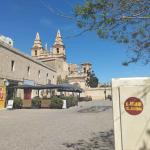
Maltese residents protest rampant occupation of pavements by restaurants with stickers
The brewing conflict over the limited public spaces led to the eruption of a protest over the weekend
Culture and Tourism

Remember El Bulli? You can sleep there for free
The unique opportunity appears to be a one-off on Airbnb, but you get to personally meet Ferran Adria

One month to go: Check out the Eurovision 2024 programme
The host city, Malmö, is offering visitors an entire week of diverse entertainment
Education and Sport
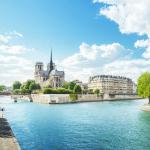
3 months before start of Olympic Games, the Seine not ready for swimmers
This can end up being a major embarrassment for the French capital, as cleaning up the river was touted as a major green project
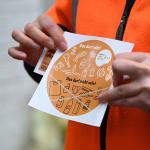
Aachen waste company will not empty incorrectly filled organic bins in a bid to re-educate residents
Its employees leave stickers on the containers indicating what can go in and what cannot
Welfare and Health

This Bulgarian town has hired a snake hunter
Still, the aim is not to harm the animals and they will be released at another spot after capture
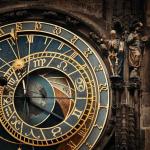

Prague’s Astronomical Clock will stop for a bit on 3 April - find out why
Czechia is marking a national ‘No Rush Day’ across the country

7 Strange Christmas Traditions from around Europe
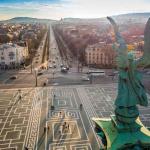
These Are the 7 Most Interesting Boulevards in Europe
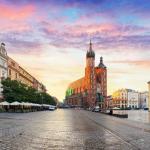
5 of the Best European Main City Squares
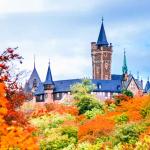
These are the 7 Best European Cities to Watch the Leaves Fall

Visit These 5 Spooky Spots in Europe and Test Your Nerves

Try the 5 Best Food Festivals in France

These Are 7 of Italy’s Tastiest Food Festivals

These Are the Oldest Restaurants in 7 European capitals (Part 2)
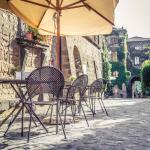
These Are the Oldest Restaurants in 7 European capitals
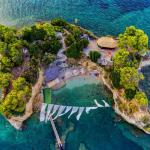
The 7 Smallest Inhabited Islands in Europe

Urmas Klaas: Arts can and must give people the ability and courage to dream of a future

Wolfgang Teubner: Тhe path towards the end of fossil fuels is irreversible

Ibrahim Kraria: While AI can play a role in combating hate speech, it can also amplify its spread

Bertrand Piccard: If something looks impossible, that’s why we try do to it!

Maja Sever: Journalism is a pillar of democracy

Kaisa Karjalainen: “It’s better to be an imperfect zero waster for the rest of our lives than a perfect one for two weeks”
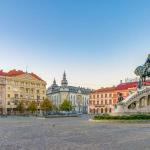
Online public services as efficient as TikTok: Cluj-Napoca’s Digital Transformation

Veni Markovski: It's about time the media stopped inviting “experts” who spread false info
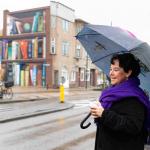
Sharon Dijksma: Without cities, it will be impossible to tackle global warming

Vasco Cordeiro: The European project is at stake when solidarity is at stake
Dubrovnik and its tourism strategy that focuses on sustainable tourism.
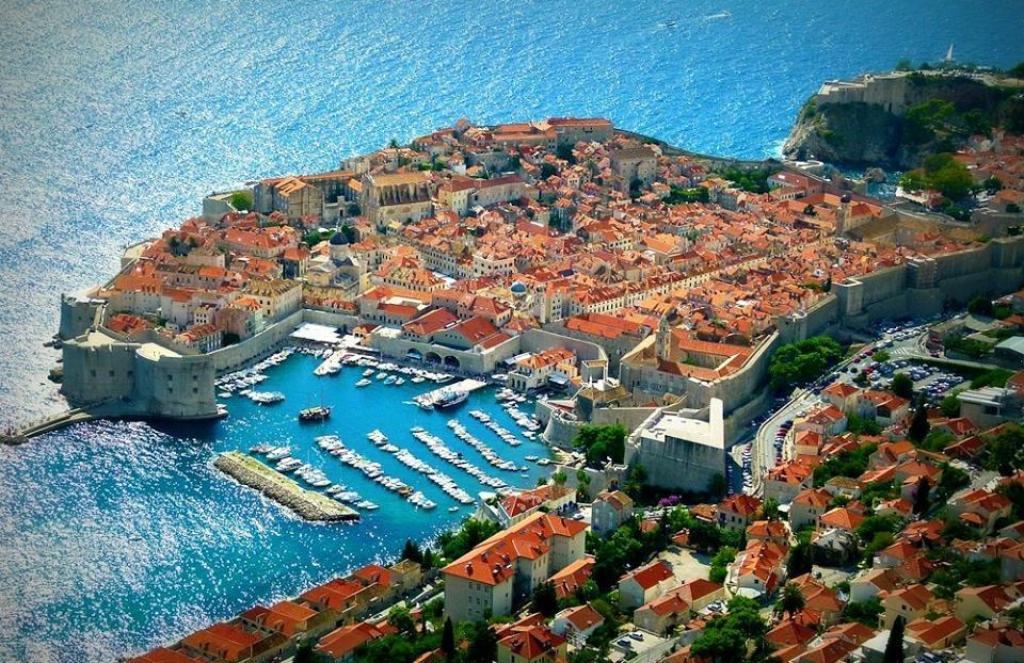
Dubrovnik, Source: Facebook / Tourism Around The World
Last year, over a million people visited the beautiful Croatian walled city of Dubrovnik
The Croatian town of Dubrovnik is at risk of being overwhelmed by visitors from the cruise ships that arrive daily. With thousands of visitors every day, Dubrovnik is suffering a similar fate to other mass tourist destinations throughout Europe. Last year, over a million people visited the beautiful Croatian walled city of Dubrovnik.
UNESCO already warned that Dubrovnik’s world heritage status was at risk due to the huge number of tourists.City for all seasons’ motto demonstrates Dubrovnik’s primary focus on prolonging the tourist season, while the new “Respect the City” project will undoubtedly contribute to the sustainable tourism development.
Source: express.co.uk
Growing City

Social City
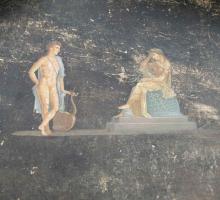
Pompeii surprises with new frescoes
The newly revealed wall art gives a peek into the decorations of a household dining room
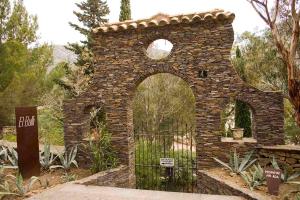
New European Bauhaus

The hands-on drive for sustainable living in Europe
Urban dwellers across the EU are having a say in making their surroundings friendlier to people and the environment.

Wood: building on an abundant natural resource
Forests in the EU can help green the European construction industry and bolster a continent-wide push for architectural improvements.

Madrid will employ AI to spy on waste deposited outside of containers

Accessible reading: Varna Regional Library Delivers Books by Bike

Home renovations for Europe’s low-income families get a boost
- International edition
- Australia edition
- Europe edition
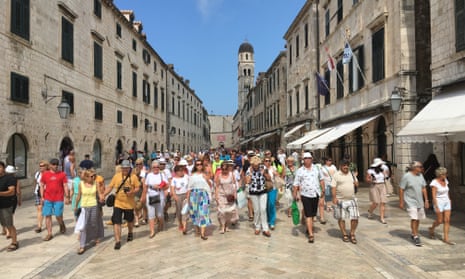
Mass tourism is at a tipping point – but we’re all part of the problem

N early 30 years ago, researching for a Guardian series on global population pressures, I interviewed the zoologist Desmond Morris . During that interview, Morris said something that was hard to forget. “We have to recognise,” he said, “that human beings may be becoming an infestation on the planet.”
Those words came back to me as reports came in about the increasing reaction in many parts of Europe against the depredations of mass tourism. Last week I read a stress-inducing story in the Times about appalling passport-check delays at Milan airport; three days later, I walked through those selfsame passport gates with only a brief and courteous check.
Nevertheless, when places from the Mediterranean to the Isle of Skye all start complaining more or less simultaneously about the sheer pressure of tourist numbers in their streets and beauty spots, as has happened this August, it feels as if the always uneasy balance between the visited and the visitors has gone beyond a tipping point.
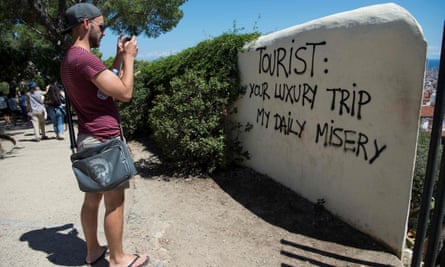
Pictures of a wall in Barcelona saying, “Tourist Go Home”, or of protesters in Palma saying, “ Tourism Kills Mallorca ” should touch an uneasy nerve in anyone whose summer getaway has taken them to places such as San Sebastián, Dubrovnik, Florence, Venice and – further afield – New Orleans and Thailand. For all of these have either taken or are considering measures to limit the relentless pressure from mass tourism by people like you and me.
Predictably, Venice is one of the most agonisingly pressured of all. It embodies the increasingly irreconcilable forces of vernacular life, tourism and sustainability in historic parts of Europe. But that doesn’t stop the millions arriving all the time – 28 million this year , in a city with a population of 55,000, many disembarking from monstrous cruise ships that dwarf the ancient city as they approach the Grand Canal. Each day in summer is a humiliation of most of the things the world treasures about Venice. Not surprisingly, many locals have had enough.
It’s a pattern that is replaying in different ways in other much-visited parts of Europe and beyond. Anarchists in Barcelona captured the headlines by holding up tourist buses in protest against the cost of living that they say is inflicted by tourism, especially by short-term-let companies such as Airbnb, which drive up housing costs. Next week, something similar is promised in the Basque town of San Sebastián.
But these are only the hot spots. The tourism problem runs far wider. Human beings across the world make more than a billion foreign trips a year, twice as many as 20 years ago. In Britain, statistics this week show we took 45 million foreign holidays last year, a 68% increase on 1996. And foreign trips cut both ways. Many of those who were interviewed in the media when the narrow road to Glen Brittle on Skye became jammed with traffic this week were European visitors, attracted not just by the scenery but by the advantageous exchange rate.
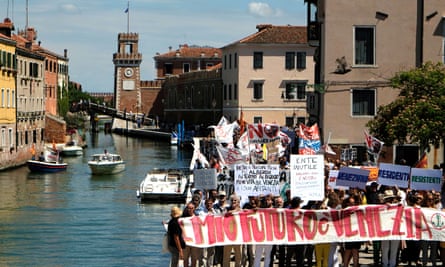
The problem shows itself in both supply and demand. There isn’t enough room for the many to walk through the centre of Dubrovnik, or enough public loos on Skye for the visitors. But the number of people wanting to visit such places is rising all the time, fed by greater global prosperity, cheaper air travel and increased overall provision of hotels worldwide. Tourism is now the largest employer on the planet. One in every 11 people relies on the industry for work . Unsurprisingly, few governments want to put a squeeze on such a source of wealth.
You only have to become a travel industry consumer, as many of us are doing this summer, to realise that you too are part of this problem, not the solution. We all want to go to places such as Venice. And we are mostly all willing to submit to the indignities and embarrassments that are involved in doing so – whether it’s irksome but necessary security checks or overcrowded departure lounges, no-frills flight regulations, car hire price-gouging and all the rest of it. Rationally, the European mass travel industry is not fit for purpose. I defy anyone to say they like Luton airport. Yet still we come. Few are seriously deterred.
Can anything be done to get the visited and visiting into a more sustainable balance? It is tempting to fall back on Morris-like pessimism and to suspect that it can’t, that the issues are unmanageable. There are multiple genuinely difficult issues involved here. The biggest, in a global sense, is the rise of Chinese tourism. But why should Chinese people be denied the rewards – for they certainly exist – of travel? The tourism industry’s carbon footprint is equally problematic. But if people want to take the planes, and the planes are available, who is to say that this should stop? Closer to home, it is beyond question that many British tourists behave badly abroad. The stag-do and hen-do culture is out of hand. But you can’t restrict access to Italy to those who know their Giotto from their Duccio.
Writing a few days ago, the writer Elizabeth Becker argued that only governments can handle runaway tourism. Governments can control entry to their countries, she said, can regulate airlines and ships, prevent inappropriate hotel development, and use taxes to shape visitor demand and benefit local people, place limits on rip-off prices that distort markets. Yet even Becker admits that most governments prefer things as they are. The prospect of truly effective coordination by governments remains distant.
It would be wonderful if governments could find effective ways to at least mitigate the worst problems. Some, such as those of Thailand and Bhutan, have been bold, even though most restrictions hit hardest at the less well-off and are most easily circumvented by the rich. The role of government action to ensure adequate and appropriate infrastructure in tourist areas is indisputable.
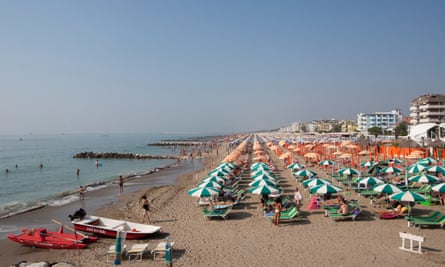
In the end, though, I think we have to take greater individual responsibility too. This will irk those who think of themselves as independent travellers rather than members of tourist herds, but unless we embrace individual and collective restraint more seriously, the destruction and damage to cities such as Venice or beauty spots such as Glen Brittle will simply grow.
We have to re-examine the idea that we enjoy an unfettered liberty to travel at will or for pleasure. We have to rethink the impulse that says that a holiday from work – or retirement from work – is an open sesame to exploring the world. We should learn from Henry David Thoreau that one can travel as much – and develop as much as a human being – in one’s own locality as in the far-flung and exotic corners of the globe.
Travel broadens the mind, they say. But is the person whose air-conditioned tour bus whisks them to a distant glacier in Patagonia or to the Mona Lisa for a quick selfie before depositing them at a characterless international hotel richer in experience than the one who spends the same amount of time watching the birds or the butterflies in the back garden? I doubt it. We may not be an infestation yet. But we are a problem. Travel can narrow the mind too.
- Travel & leisure
- Desmond Morris

‘A good cruise is one that doesn’t come’: Europe’s ports bear brunt of ship pollution

The Loathe Boat: the honking cruise ships ‘ruining’ Istanbul’s port

Amsterdam to close cruise ship terminal amid effort to restrict tourism

Cruises, crowds and fragile ecosystems: the delicate dance of Antarctic tourism

Cruise passengers shuttled into Venice by motor boat to dodge big ships ban

Unfinished and unwanted 9,000-passenger cruise ship to be scrapped

US cruise ships using Canada as a ‘toilet bowl’ for polluted waste

Sinking feeling: cruise ships chart return to Australia amid emissions concerns

Around the world in 245 days – at just £67k for cruise of a lifetime
Most viewed.

IMAGES
VIDEO
COMMENTS
It's the last bastion of an 'authentic' urban Dubrovnik increasingly squeezed into the background by the homogenizing forces of mass tourism. Indeed, the Dubrovnik Tourist Board, aware that cramming the Old Town full of visitors is not a sustainable strategy either for Dubrovnik as a town or for tourism as an industry, has taken Gruž ...
Signs of 21st-century mass tourism hang on a medieval street. Shortly after being elected in June 2017, mayor Mato Franković introduced the multidisciplinary project "Respect the City" (RTC), aiming for more sustainable development of Dubrovnik.
Overtourism alienates and drives out local people. In Dubrovnik today, just 1,557 people live in the Old Town, down from 5,000 in 1991. Homes and flats are turned over to tourist accommodation which destroys any sense of community and pushes up property prices. Everyday life is impacted by the presence of thousands of tourists swamping the ...
Conservationists warn of mass tourism impact. ... more than 600 islands and iconic towns like Dubrovnik. Yet mass tourism can cause serious environmental harm, for example in Croatia's northern ...
Dubrovnik is a prime example of the effects of mass tourism, a global phenomenon in which the increase in people travelling means standout sites — particularly small ones — get overwhelmed by crowds. As the numbers of visitors keeps rising, local authorities are looking for ways to keep the throngs from killing off the town's charm.
Dubrovnik is Europe's most overtouristed city. Using data from 2019, Statista found that Dubrovnik was the most touristed city in Europe, above both Venice and Barcelona. The city has a ...
In 2019, almost 1.4 million foreign tourists visited the city, up from 1.2 million in 2017. Last year, that number plummeted to 178,828. Dubrovnik's local population - a dwindling and ageing ...
1.1. Context, purpose and research questions. Dubrovnik is a port and coastal town by the Adriatic Sea in the republic of Croatia with a city region population of 44,000 by December 2017 (citypopulation.de, Citation 2019).The city is also known for her Old Town that is registered in the UNESCO's world heritage list and as a result, overtourism in Dubrovnik is a concern for the UNESCO as well.
Dubrovnik is increasingly becoming perceived as a city that has started managing its tourism in a sustainable way. As key factors in years to come, the City of Dubrovnik is planning to take over cruise ship shuttle services and gradually eliminate traffic around the gateway area. In COVID-19 times Croatia was recognized as a safe destination ...
Responsible tourism in Dubrovnik. It might seem like Dubrovnik has only popped up on the tourist radar since Game of Thrones, but this city has in fact been a gathering place for mass tourism since WWII, until the Croatian War of Independence in 1991 stopped it in its tracks. The difference is, those tourists came in manageable numbers ...
According to a new study by Holidu with annual tourism data from 2019, Croatia's Dubrovnik surpassed the infamously over-touristed Venice by a good bit, counting 36 tourists per local residents.
Mass tourism, or "overtourism" as it was characterized in 2017 in Dubrovnik, has been a threat to ... tourist destination. Figure 1. Dubrovnik on the map Source: Google Earth . 7 The City of Dubrovnik Region Dubrovnik-Neretva Surface 2143,35 km Population 41.671 (2021)4
Dubrovnik is a prime example of the effects of mass tourism, a global phenomenon in which the increase in people traveling means standout sites — particularly small ones — get overwhelmed by ...
In 2005, mayor Franković confirmed to Bloomberg that the show was responsible for half of Dubrovnik's 10% annual tourism growth. Moreover, speaking to The Telegraph some years back, tour guide Ivan Vukovic pointed out that Game of Thrones was responsible for 8 of the 18 tours his company organized daily in Dubrovnik.
The Croatian town of Dubrovnik is at risk of being overwhelmed by visitors from the cruise ships that arrive daily. With thousands of visitors every day, Dubrovnik is suffering a similar fate to other mass tourist destinations throughout Europe. Last year, over a million people visited the beautiful Croatian walled city of Dubrovnik.
K nown as the "pearl of the Adriatic", Dubrovnik has become one of the biggest tourist attractions in the Mediterranean. Its charming old town, array of Unesco World Heritage sites and ...
Preserving Dubrovnik: Managing Mass Tourism • Dubrovnik's Mass Tourism Challenge • Discover how Dubrovnik, a picturesque Croatian city, tackles its mass tour...
a focus on the local tourism employees in Dubrovnik and their perception of over-tourism. The empirical data are based on 12 days' field observation in July 2018, *Corresponding author: Saeid Abbasian, Department of Environmental Studies and Tourism, Södertörn University, Stockholm 141 89, Sweden E-mail: [email protected].
Subscribe to France 24 now:http://f24.my/youtubeENFRANCE 24 live news stream: all the latest news 24/7http://f24.my/YTliveENLast year, over a million people ...
Tourism to Dubrovnik has grown steadily in recent years. During 2013-2016, arrivals increased by 357,513, or by a quarter (28.80%). In 2018, Dubrovnik received almost 1.3 million overnight visitors. Additionally, Dubrovnik welcomes around 9,000-9,500 (9,334 at 22nd of August 2019) cruise passengers daily
Dubrovnik is a prime example of the effects of mass tourism, a global phenomenon in which the increase in people travelling means stand-out sites - particularly small ones - get overwhelmed by ...
Passengers disembarking from a cruise ship in Dubrovnik. 'Human beings across the world make more than a billion foreign trips a year, twice as many as 20 years ago.' Photograph: [email protected]
Additionally, Dubrovnik has started cracking down on Airbnb rentals, which locals blame for a rise in rental costs and for pushing them out of the Old Town itself - after all, a majority of visitors hope to stay within the fortified complex, and the mass conversion of traditional Dalmatian homes into tourist accommodation is strongly opposed by natives.